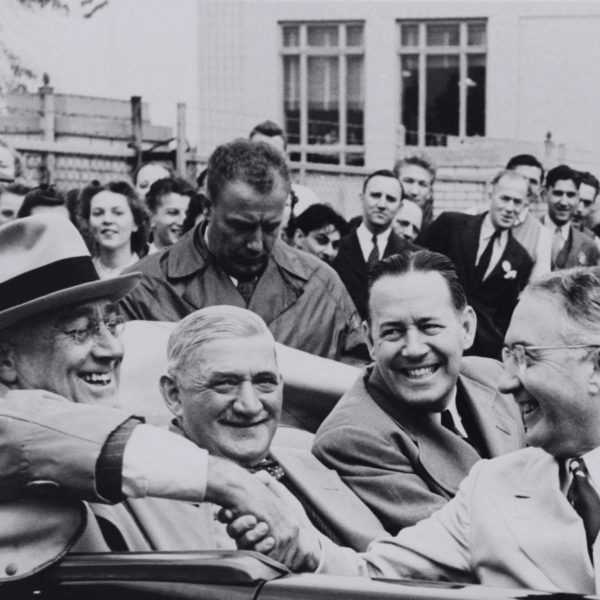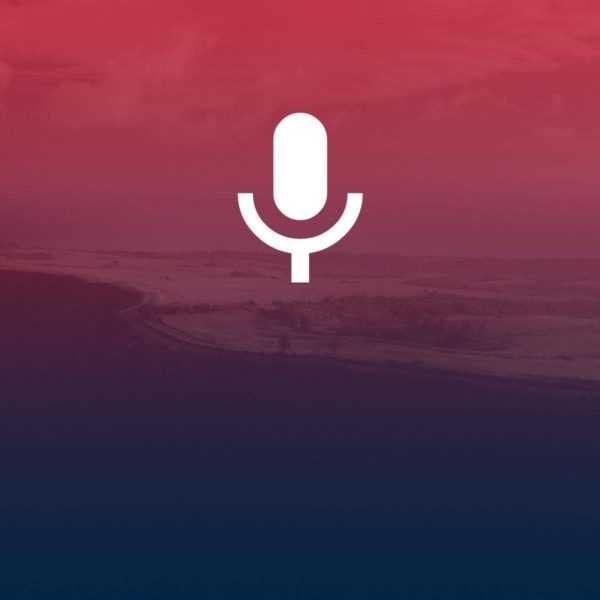Capitalism in WWII: Andrew Higgins “The Man Who Won WWII”
Andrew Jackson Higgins and his boats forever changed the strategy of modern warfare. During World War II his landing craft got U.S. soldiers, vehicles and equipment safely from ship to shore, and were used in every major operation in the European and Pacific theaters. These iconic vessels (LCVPs, LCPLs, LCMs), became known as “the Higgins boats” and immortalized their place in history with their deployment on the D-Day landings in Nazi German-occupied Normandy. His versatile patrol torpedo (PT) boats took down target ships much larger in size with their on-deck torpedoes as well as serving as gunnery boats and rescue boats, recovering downed pilots from the water.
“Andrew Higgins is the man who won the war for us.”
General Dwight Eisenhower
In addition to Higgins’ design and production genius, he was a pioneer with his business practices and a true believer in the advantages of capitalism. His New Orleans based company, Higgins Industries, began as a single boatyard, employing fewer than seventy-five people in 1938. Through his exceptional drive and vision, in late 1943, he owned several plants and employed more than twenty thousand workers. He was a man without prejudice, hiring undrafted white males, women, African Americans, the elderly and the handicapped, all paid equal wages according to their work. They responded by helping Higgins Industries produce 20,094 boats for the Allied war effort. Following the war, General Dwight Eisenhower was quoted as saying that “Andrew Higgins is the man who won the war for us.”
Here is a full transcript of the video above:
Robert Citino (RC), Samuel Zemurray Senior Historian, The National WWII Museum: World War II was a two-ocean fight. In the Pacific were landings against defended Japanese islands. In the Atlantic was the large-scale landings in Europe. None of those operations would have been possible without the Higgins boat. Eisenhower, once he was president, later looked back and said, Andrew Higgins is the one who won the war for us.
Josh Schick (JS), Curator & Project Historian, The National WWII Museum: Andrew Higgins came to New Orleans with a Mandolin and a couple dollars in his pocket in addition to that individual, charismatic attitude.
Owen Glendening (OG), Associate Vice President of Education & Access, The National WWII Museum: Various companies were looking to get into the inland marshes and swamps that lead out to the Gulf.
JS: But the water was too shallow. Vessels couldn’t get in and out of the water way. So, Higgins enlisted in a Naval architect’s class and he figured out how to make shallow draft boats that ran off shore.
OG: He kept innovating and innovating and creating these nice, affordable, durable, stable work boats.
JS: And that’s how he started his business. It exploded. He went from building his first boats in 1923 to establishing Higgins Industries in 1930.
At the very beginning of the second World War, Higgins had one plant in downtown New Orleans that had a showroom out front and a workshop in the back.
RC: But he could read a newspaper and Higgins knew, like a lot of business men, the war seemed to be in the offing.
Germany Invades Holland, Belgium
Italy Enters War
London Bombed
JS: Higgins started building new plants with his own dime, knowing that that need was going to arrive. He knew he really had the best product that could run in shallow water and beach itself.
OG: He was inventive and creative. He did some amazing demonstrations for the military to show what he thought he could do.
JS: Then all of a sudden, the contract arrived with the US Navy and they said, we need boats. And he’s like, alright well I am already started, so let’s get going.
December 7, 1941
JS: If the Japanese had not attacked Pearl Harbor, Higgins would have remained a successful boat builder in New Orleans and that would have been it. The war provided a challenge for him. He took the Ford concept of vehicles moving down an assembly line and he applied that to ship building.
OG: Higgins introduced the idea of equal work for equal pay. He had women. He had African Americans. He went and recruited country folk to come off the farm.
JS: In response to that fairness, he developed a tremendous work force that produced an epic number of vessels.
25,000
JS: Within three years he has multiple plants and he is putting 700 boats out per month.
700 Boats per Month
JS: He took a contract to build a patrol torpedo boat for the US Navy. PT boat is very dashing because they are sneaking up on war ships many many times their size and well within gun range to attempt to sink them. Higgins got a hold of that design and he said, I can build a better boat. So, he, with his own money, built his own boat, and sent it to do the trials.
From there, the Navy started investing more and more heavily. They ended up deploying these boats to the English Channel, the Mediterranean, the Southern Pacific, the Aleutian Islands.
OG: But Andrew Jackson Higgins is most known for the landing craft.
JS: The ship to shore landing is a thing that complicated a lot of military maneuvers.
How do I get troops from the ship to the shore? Hitler expressed his own frustration at trying to solve those things with invading England.
RC: Higgins came up with an idea for a landing craft. You put a ramp on the front of the vessel. The vessel beaches itself, the ramp comes down, and troops and equipment can roll off the ramp, directly onto the beach.
JS: By breaking through that concept, all of these invasions become possible. North Africa and Sicily and Guadalcanal, even Iwo Jima…
OG: That’s how boots got on the ground in the Normandy invasion.
RC: By the end of the war, he had produced the vast majority of US Naval ships.
20,000 boats over 5 years
OG: Higgins and his entrepreneurial spirit are a wonderful and express example of how capitalism was deployed for the arsenal of democracy, and America winning World War II.
PT-305 Boat Tour with Tom Czekanski
Senior Curator for the National WWII Museum in New Orleans, Tom Czekanski, acts as tour guide though the newly restored Higgins Industries-built patrol torpedo boat, PT-305. After a decade of restoration, this fully operational artifact of WWII is currently taking museum visitors on historic rides through Lake Pontchartrain.

